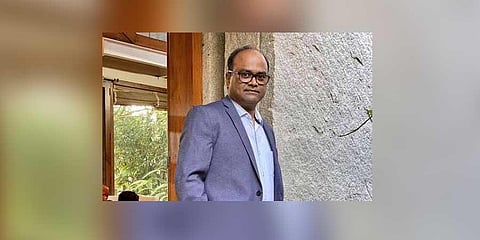

Leading epidemiologist Dr Giridhara R Babu, Professor and Head, Lifecourse Epidemiology, IIPH, Public iHealth Foundation of India, Bengaluru, and member of the ICMR's COVID-19 research group on epidemiology and surveillance, speaks to The New Indian Express on whether the lockdown has served its purpose and the road ahead. The views expressed here are personal. Excerpts:
The COVID-19 tally in the country was less than 700 on March 25 when India imposed a nationwide lockdown. While cases could reach 35,000 on May 3, the country is looking at a possible gradual lifting of the lockdown. How does it make sense and what can we expect in the weeks to come?
If there was no lockdown at the right time, assuming exponential growth, the country would have had approximately 1.5 million cases. If the cases were doubling every 3 days, we would have had 2.8 million cases. This amounts to somewhere between 47,000 to 86,000 deaths. It’s always easy to criticize in hindsight. However, since the counterfactual scenarios are not intuitive, people tend to negate the benefits. This should guide what kind of actions we need to take as we move forward.
It is time that the country segregates all activities into essential and nonessential. While only essential activities will have to be allowed, the country has to adapt and continue the new normal. It has taken unparalleled measures including several sacrifices to reach this stage. We should not squander away the benefits in the zeal of opening up everything all at once. You can enter all at once (into lockdowns); however the exit has to be phased by location and extent of spread.
Do you think the lockdown period has achieved the desired results in terms of containment so far and also in preparation of health systems?
It would be unfair to us at the country level to know where we stand. The analysis should always be at the state and district levels. In my view, most states have achieved reasonably good results in terms of containment. Kerala is the leader of the pack while all the other south Indian states and Haryana have done reasonably well. The containment efforts in Gujarat, West Bengal, MP, Delhi, UP and Punjab have shown recent success which has to be improved. The health system has responded well but not sufficiently to address a huge escalation in the surge of infections.
Do you agree with the theory—and some claims being made— that India has managed to flatten the curve?
Flattening of the curve is a dynamic concept. It only means that we have postponed having the peak load of transmission to a future date. In order to bend the curve, Ro should be less than one. “2E’s” should guide our progress. The first is epidemiology. This should guide our actions in terms of how much relaxation one can do while lifting the lockdown. However, this has to be balanced with another E representing the expectations of the people, society and other sectors.
The positivity percentage in the country has hovered around 4-4.5 % in the last 40-45 days or so. Could it indicate that the number of cases we are finding is proportionate to the number of tests we are doing and we should therefore ramp up our testing in order to find more cases?
We should certainly ramp up the testing. Currently only 1 in 23 tests is turning out to be positive. But if you look at Delhi which has one of the highest number of tests per million, one in 13 tests are positive and it has double the positivity percentage (8%).
There has been a lot of talk about how the overall number of cases and mortality in India has been lower, compared to several Western countries despite our huge population and population density. What are your comments on that?
There are multiple reasons for the lower burden of cases. One, because of the nationwide lockdown much earlier. Two, most of the infections were in the young age group with relatively fewer comorbidities. This can change if it spreads to wider communities. We have only conducted around 500 tests per million population and our surveillance activities have not been strong enough. Also, most of the cases are asymptomatic (comprises pre-symptomatic, atypical symptoms and truly asymptomatic) hence we do not know the actual incidence. Moreover, 68% of the population is below 35 years.
Can you please elaborate on what is going to be our surveillance strategy in the coming months in order to contain the outbreak?
Finding every case and identifying all the areas of transmission should be the main surveillance strategy. SARI and ILI surveillance should be strengthened and reviewed by the states and Centre in order to gauge the presence and extent of transmission. Testing capacity should be expanded.
Isolation of severe cases will have to be done at district and subdistrict level and therefore the health system has to prepare district action plans for both containment and mitigation This should be similar to how we prepare for national immunization plan (pulse polio).
There should be a district task force to prepare the micro planning with the help of the local medical colleges. The WHO has surveillance medical officers who can provide support to facilitate this process. IDSP and ICMR can provide continuous real time data on the integrated dashboard, which can help all the districts and states to review, plan and monitor as we move forward.